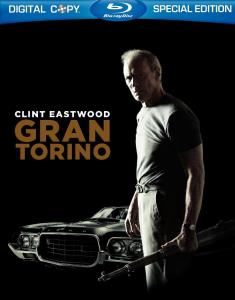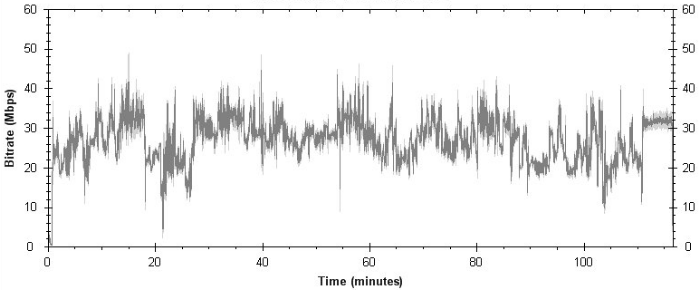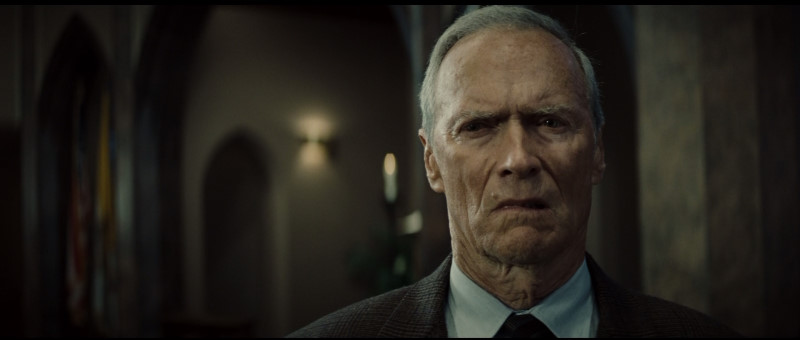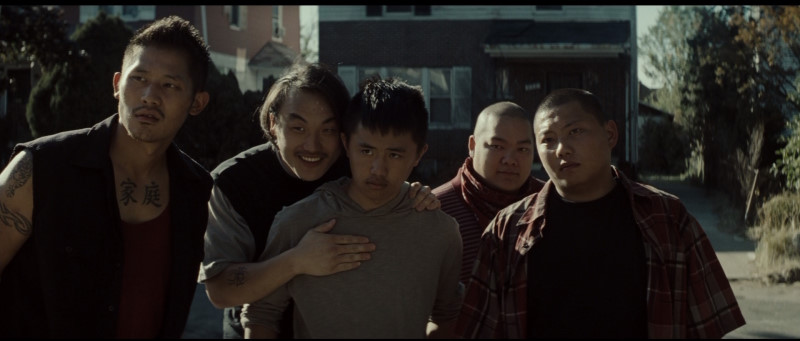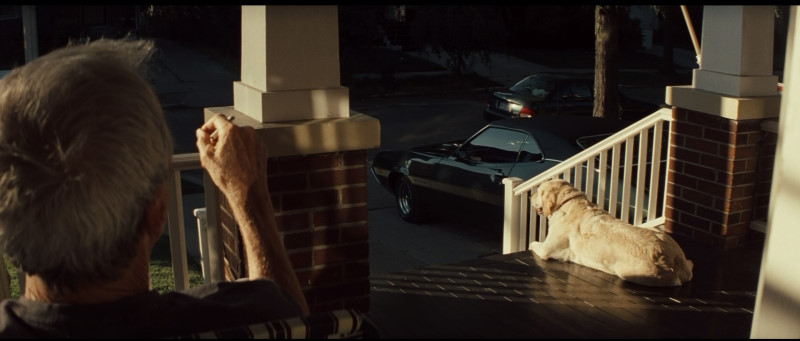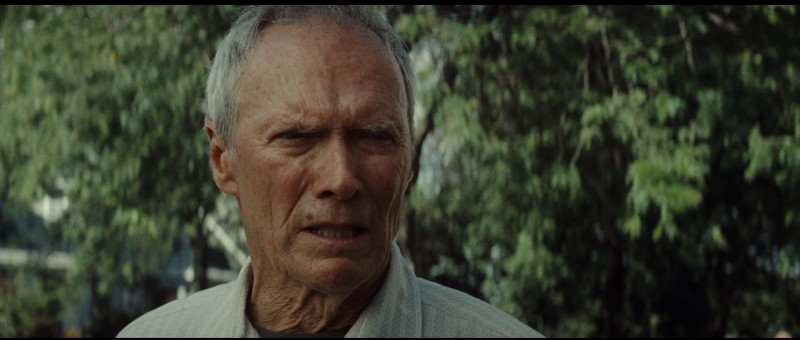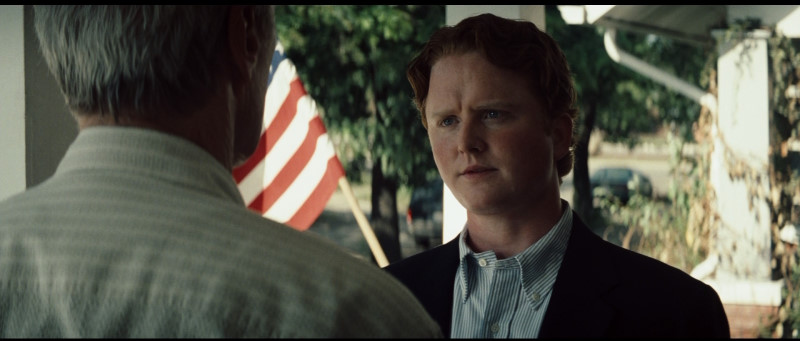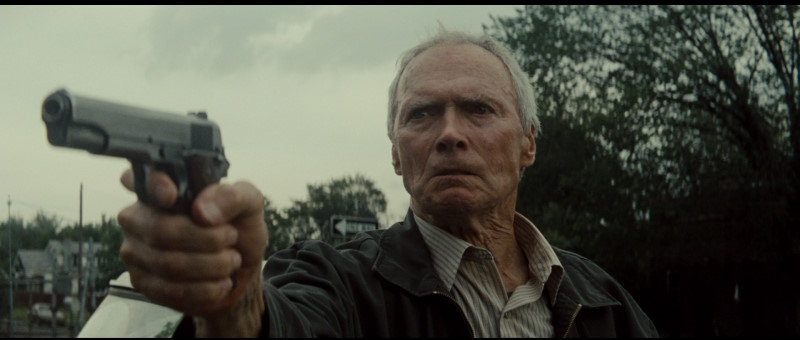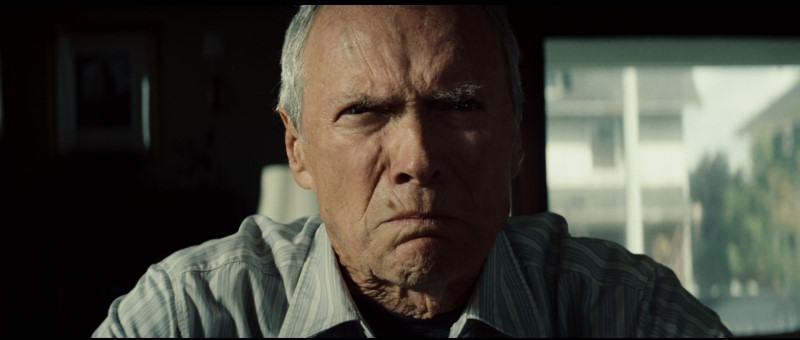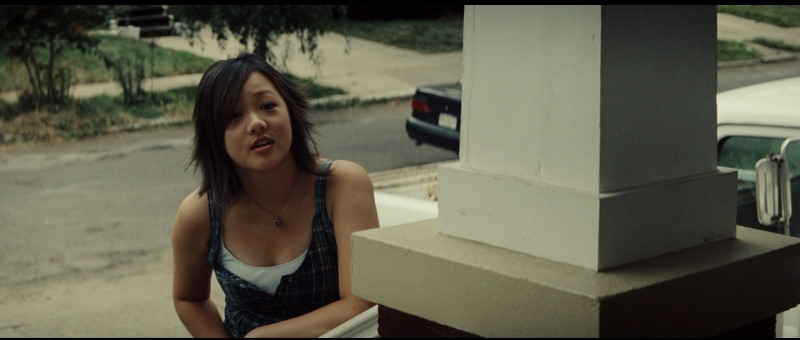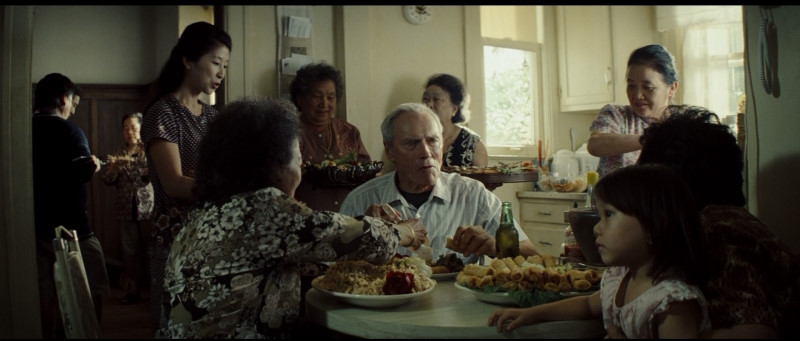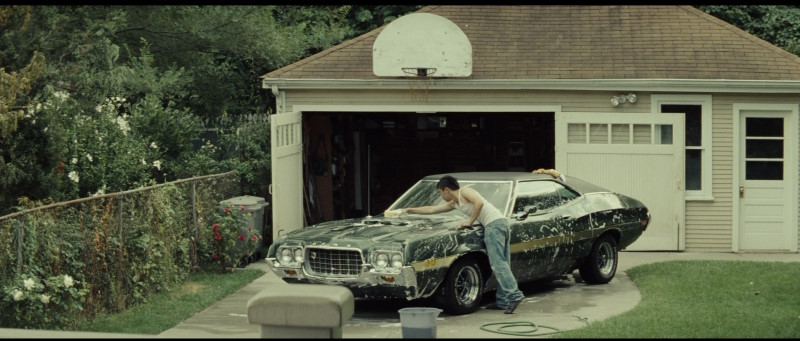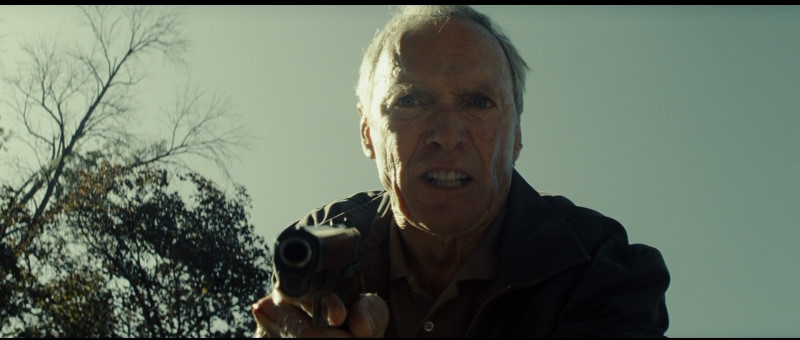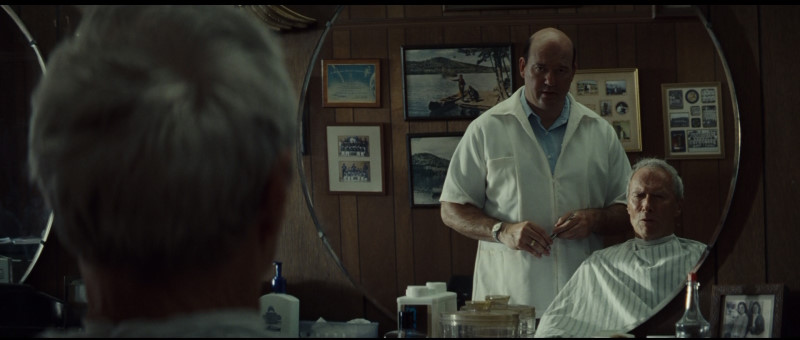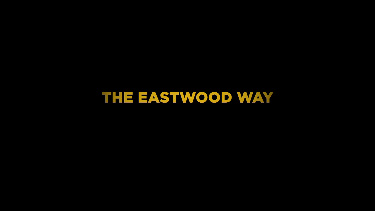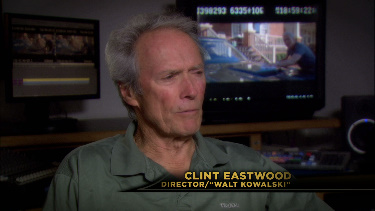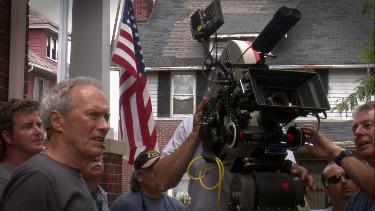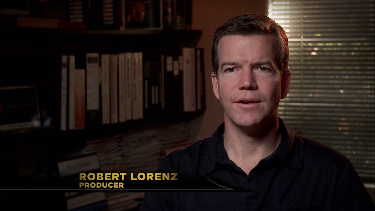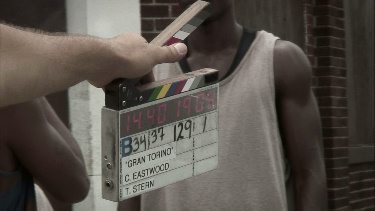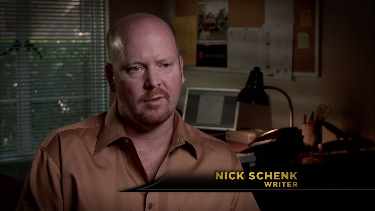:
Theatrical:
Village Roadshow & Double Nickel Entertainment/Malpaso
Production
Video: Warner Home Video
Disc:
Region: ALL
(as verified by the
Momitsu region FREE Blu-ray player)
Runtime: 1:56:34.779
Disc Size: 33,450,885,687 bytes
Feature Size: 29,708,101,632 bytes
Video Bitrate: 26.99 Mbps
Total
Average Bitrate: 33.98 Mbps
Chapters: 29
Case: Standard Blu-ray case
Release date: June 9th, 2009
Video:
Aspect ratio: 2.4:1
Resolution: 1080p
Video codec: VC-1 Video
Bitrate:
Audio:
Dolby TrueHD Audio English 1344 kbps 5.1 / 48 kHz / 1344
kbps / 16-bit (AC3 Core: 5.1 / 48 kHz / 640 kbps)
Dolby Digital Audio English 640 kbps 5.1 / 48 kHz / 640 kbps
Dolby Digital Audio French 640 kbps 5.1 / 48 kHz / 640 kbps
Dolby Digital Audio Portuguese 640 kbps 5.1 / 48 kHz / 640
kbps
Dolby Digital Audio Spanish 640 kbps 5.1 / 48 kHz / 640 kbps
Subtitles:
English (SDH), English, French, Portuguese, Spanish, none
Extras
• Manning the Wheel – in HD (9:23) – mindless background
music that isn't even in period character. Interviews with
cast and crew about their preferences and dream cars.
• Gran Torino: More Than a Car – in HD (3:57)
• Digital Copy Disc
Exclusive to Blu-ray:
• The Eastwood Way – in HD (19:17)
• BD-Live
Comment:
The Movie:
6
“Well-intentioned” is not a phrase that leaps to mind when
we think about Clint Eastwood movies. There’s something
about that expression that suggests a “but” will soon
follow. Indeed, Changeling is well-intentioned in
that neither its violence nor its seedier aspects strike us
as gratuitous. While Changeling has a strong human
interest veneer, Gran Torino incorporates a strongly worded
public service message about racism.
Of course, the familiar subtexts of Guilt and Redemption, so
dramatically and violently played out in Unforgiven,
are back with us again, as is the idea of the Redeemer being
the same person as the one redeemed. We can feel this idea
lurking a few paces behind the Preacher in Pale Rider,
but fully developed in The Outlaw Josey Wales.
Gran Torino
is set in a contemporary Midwestern town where the
neighborhood has become gradually infested (I think that’s
the right word) with aliens, specifically the Hmong – a
refugee people from Southeast Asia. Eastwood, who had
promised himself a few years back that he would retire to
the other side of the camera, got caught up in this story
and agreed to direct and to play its lead character, Walt
Kowalski, a man haunted by what he saw or was part of during
the Korean War and has since devolved into the very essence
of the American racist.
His wife, who has acted as his anchor and moral compass for
the previous several decades, dies just before the movie
begins, and Walt is at his funeral where his adult children
along with their families have come to town to pay grudging
respect – not to the or mother, whom they and everyone else
clearly loved, but to their father, whom they tolerate.
We see why and how in the next few minutes as Walt , who now
lives alone, spends his hours caring for dog and his 1972
Ford Gran Torino Special, a car that he helped build -
really. He keeps his car tidy and occasionally walks it out
to the end of the driveway where he can indulge himself with
pride of accomplishment from his front porch, a porch from
which he also indulges every opportunity to cast every
imaginable racial slur against his new neighbors. He want
nothing from nobody, not his neighbors, nor his children and
certainly not Father Janovich (Christopher Carley), who is
forever trying to drag Walt back into the church (sound
familiar?)
Thao (Bee Vang) is a downcast, but smart teenager who is
harassed by a local gang who insist that he join them. His
older sister, Sue (Ahney Her), is fluent in English,
outgoing, and not easily discouraged – especially by Walt’s
irascible remarks and behavior. She is also rather
foolishly fearless. One day, Walt proves that even a racist
can respond to injustice as he confronts a trio of local
blacks when they make an unwanted play for Sue.
The substance of the story is really about Walt’s gradual
return to humanity, even if violence must be met with
violence – up to a point. And it is that point that sets
Gran Torino apart from other Clint Eastwood movies.
Some will find the absence of mayhem and violence
discouraging. Others will object to the ending. I didn’t,
particularly. Funnily enough, my greatest difficulty with
the movie was the writing and the line deliveries, which
often felt forced and unnatural, especially when Walt gives
Theo lessons on how to talk the talk of a man in charge of
himself – someone who can pass in American society. Was
this supposed to be funny, I wondered, or instructive? Even
as extensions of Walt's peculiar character, I found the
specific phraseology exchanged between him and his buddies
uncomfortable and embarrassing – as if the actors were
speaking a language foreign to them and didn't yet have the
rhythms right.
Image:
5/8
NOTE: The below Blu-ray captures were ripped directly from the
Blu-ray disc.
The first number indicates a relative level of excellence
compared to other Blu-ray video discs on a ten-point scale.
The second number places this image along the full range of
DVD and Blu-ray discs.
For a while there I worried there was something wrong with
my projector: the oddly filtered image (I admit icky green
is my least favorite color), which doesn't lack for
sharpness, seems thin, flat, soulless – as if the life had
been sucked out of it. Blacks are sometimes crushed;
shadows often lack detail. For a while I half expected life
to emerge as Eastwood’s character becomes more neighborly,
but, alas, not. I can't say if this is representative of
how the movie looked in the theatre but I thought it gave
the impression of being amateurish.
CLICK EACH
BLU-RAY
CAPTURE TO SEE ALL IMAGES IN FULL 1920X1080 RESOLUTION
Audio & Music: 4/7
If the image is problematic, the audio is more so. Both
dialogue and music is muted. I asked myself: Is this
supposed to be how someone of Clint's age hears things? For
the life of me I can't understand why the audio sucks as it
does. Even in Dolby TrueHD the opening guitar and piano (is
that a guitar and piano!) melody is remote and thick, as if
heard from inside a coffin (perhaps the intended effect.)
I set my playback level once dialogue came on board, but
everything remains compressed, literally like a stopped
string.
Operations: 7
Curiously, the movie is not subtitled in Hmong.
Extras: 4
Here’s a movie about a guy who never lets a racial slur
remain unspoken, but comes around in due course, but the
extra features waste far too much time explaining or
apologizing for Walt or for Clint. I find these minutes
insulting to the intelligence of its audience – like those
disclaimers from Warner Home Video whose only purpose is to
defend against reactionary PC hard cases.
But the extras do have their moments, as when Clint speaks
about having his retirement interrupted by a movie where he
plays a “derelict.” He has a certain sense of detached
humor about his movie and his character that I found a
relief after so much back-watching. The segments about the
cars are far less impassioned or exciting than I expected –
something like a pre-car-show red carpet episode.
The extra features all sport a fabulous image, especially as
compared to the movie.
Recommendation: 5
There's a likeable movie in here someplace, but its clumsy
and ham-fisted script, filled with cardboard characters –
not all of them, but too many – gets in its way. I wish I
could be more positive or sympathetic about the image or the
audio, but I found them difficult and unsupportive of the
drama.
Leonard Norwitz
May 29th, 2009
![]()
![]()

![]()
![]()
![]()
![]()

![]()
![]()
